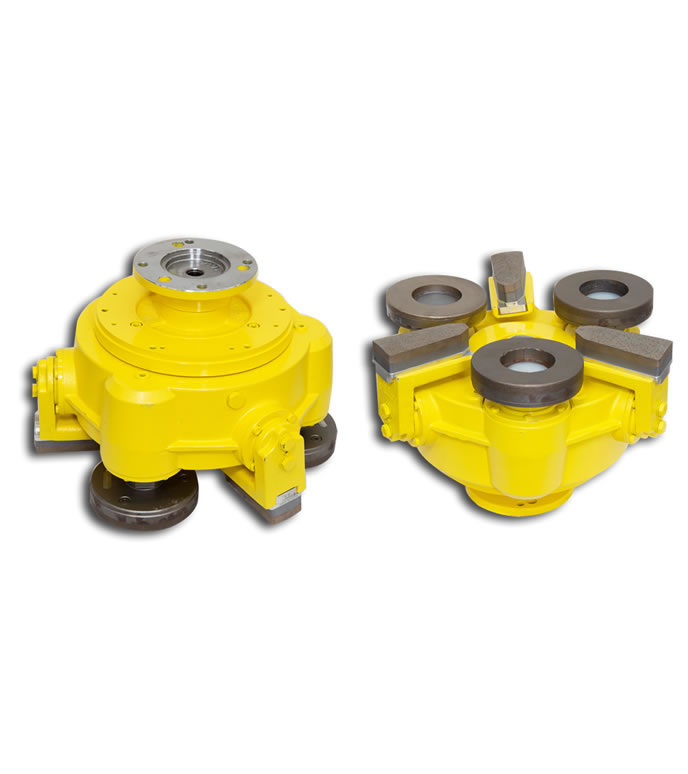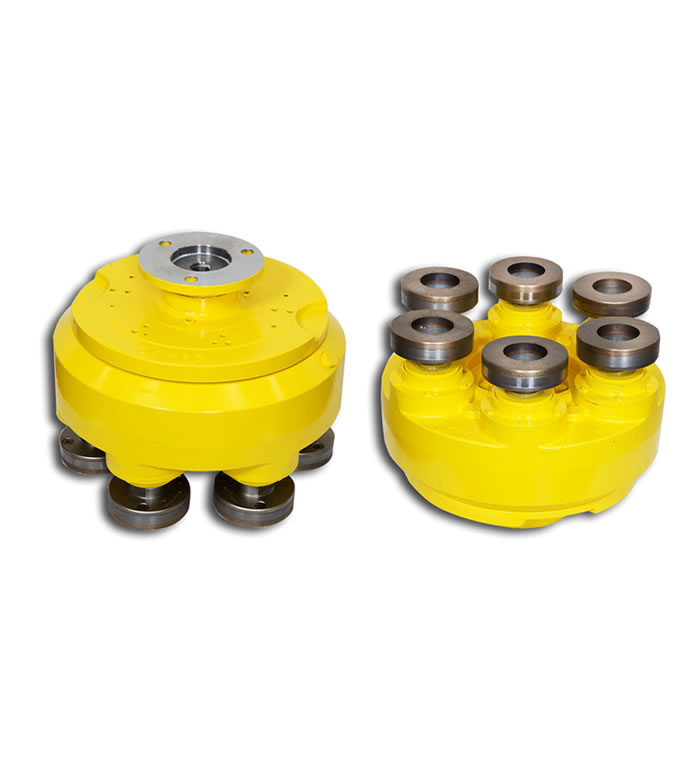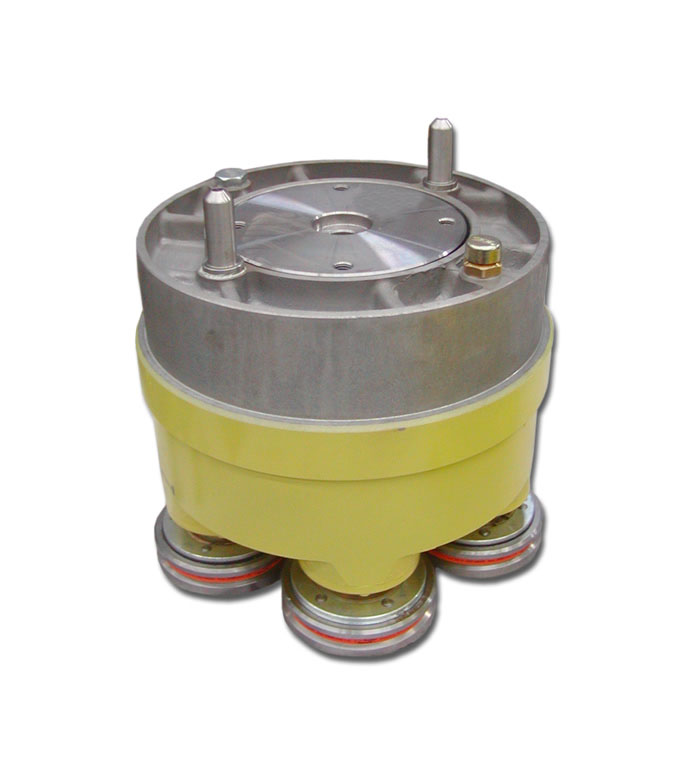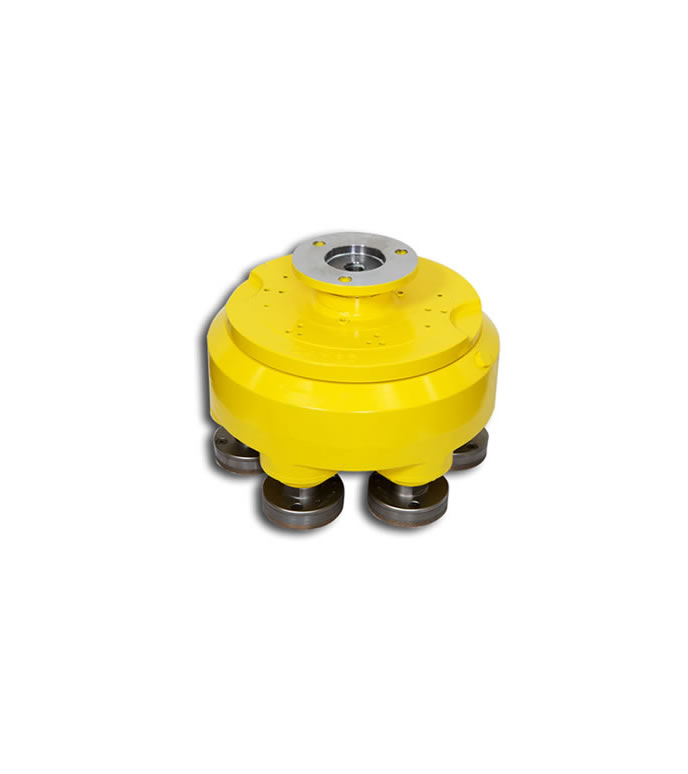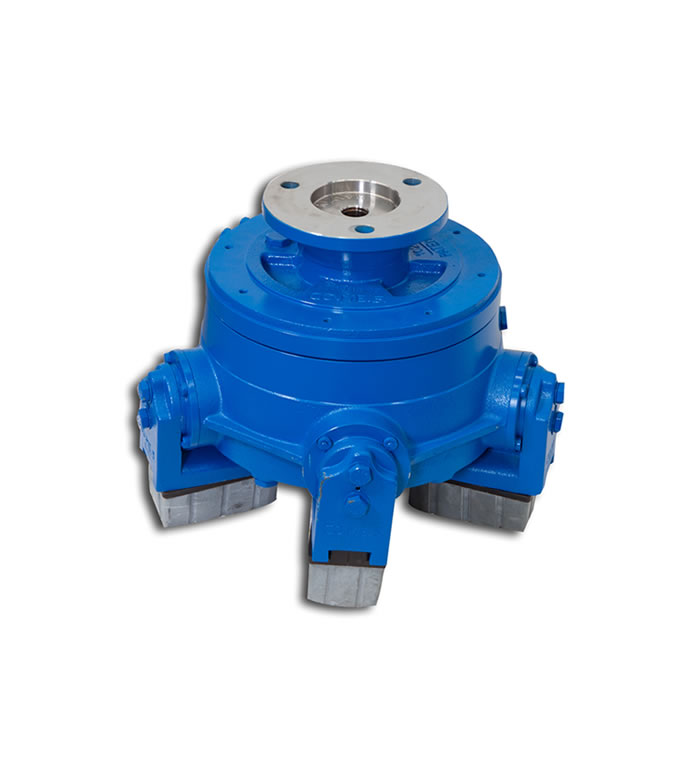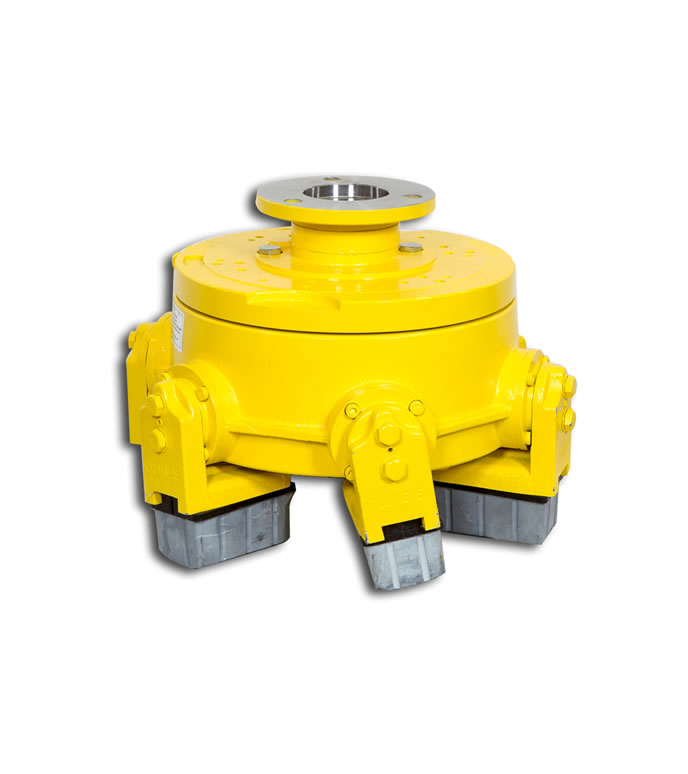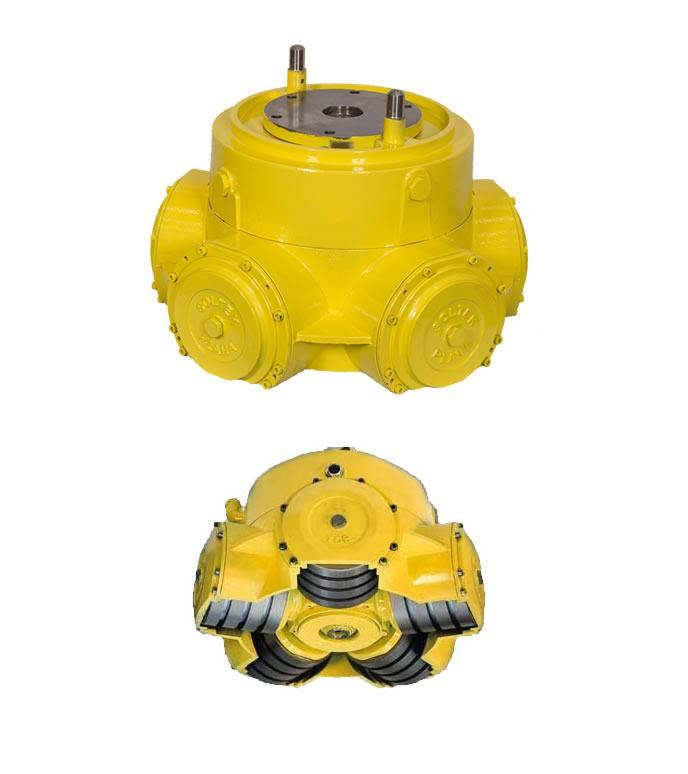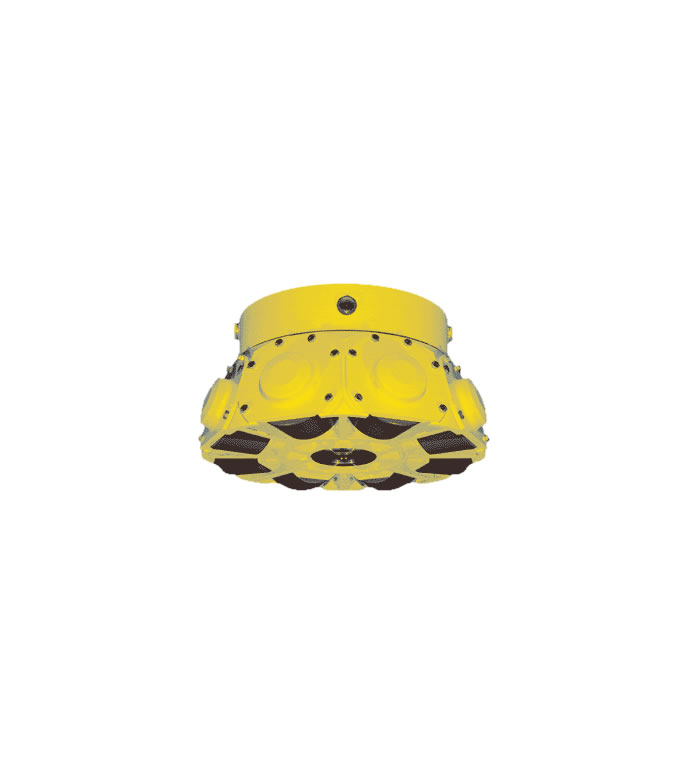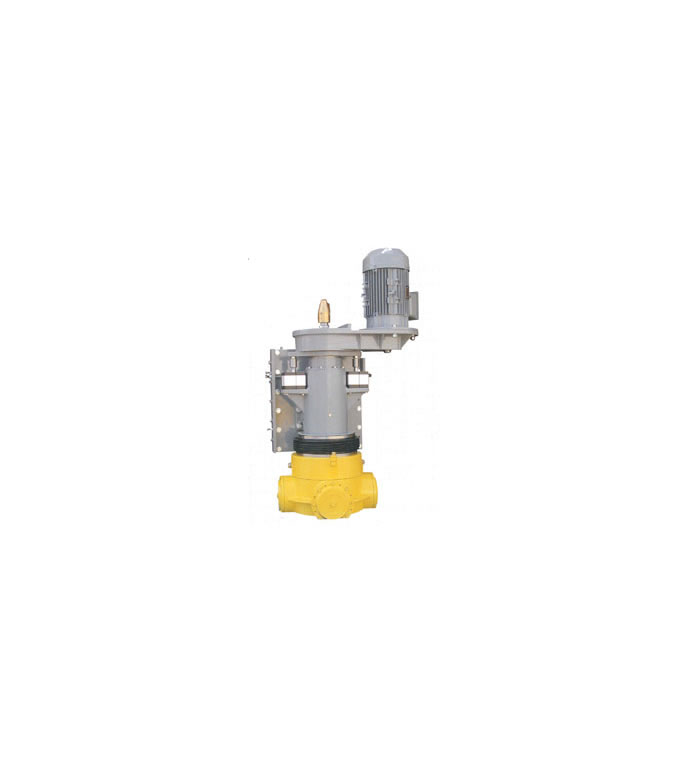Articles posted by wamboo
MIX Calibrating Head
The Mix head is a revolution in the mechanics of polishing heads, as it has 3 satellites and 3 fickert arms that work on the surface all at the same time .
Such mechanism has been designed to solve 2 problems that may occur when polishing granite:
1 – The deep marks left on the surface by the satellite heads in the first few stations of the polishing machines.
2 – The need to use several stations after the calibrating heads, with diamond tools on fickert heads, to the detriment of the finish.
The Mix head, with its 3 satellites and 3 flickert units:
a) remarkably reduces the section of the material, even at zero pressure, thus acting as a veritable calibrating head.
b) its 3 flickert units, despite calibrating at the same time as the satellites, act as limit switches for the satellites, thus removing the marks left by the aggression of the satellite tools and helping achieve excellent levelling results.
c) as a consequence, because the material is so well levelled out and free of any of the usual deep marks, diamond consumption on the next stations is optimised, so fewer flickert TYPE heads need to be used and the material is already finished by the consumable abrasives. Which, of course, adds value to the material.
DAMP Calibrating Head
The DAMP is a special satellite head with 5 or 6 abrasive tools used to hone/lap even tiles of different size. It consists of a revolving casing in spheroid graphite cast iron, equipped with 5 or 6 grindstones which are secured to special corrosion-proof rests. The internal gears, bearings and all other mechanisms are soaked in an oil bath, with long-life, heat-proof seals. The motor drive provides the working force. The fixed flange must only withhold the torque reaction, without having to be rigidly fastened to the machine body. distinctive feature of these heads is the special internal vibration damper system that polishes the tile evenly, even when the surface is particularly bent. In addition, the shafts can be angled away from the axis of rotation of the head, to make it easier for the abrasive grindstone to remove and finish the material during the process. The head should be installed on honing machines provided with a backpressure feature.
Technical specifications of the DAMP
Number of satellites No. 5/6
Max power kW 15
Min head revolving speed revs/min. 400
Max head revolving speed revs/min. 600
Abrasive grindstone max diam. mm 150
Amount of lubricant l 9.3/9.2
Weight with lubricant Kg 100/102
Max honing diameter mm 460
TL 104/105/106 Polishing Head
The TL is a special satellite head with 4, 5 or 6 abrasive tools, used to hone/lap even very small tiles. It consists of an aluminium revolving casing, equipped with 5 grindstones which are secured to special corrosion-proof rests. The internal gears, bearings and all other mechanisms are soaked in an oil bath, with long-life, heat-proof seals. The motor drive provides the working force.
The distinctive feature of these heads is the special internal vibration damper system that polishes the tile evenly, even when the surface is particularly bent. In addition, the special construction of the SOLTEK satellite head produces satin-finished or semi-honed surfaces where the surface dips and bumps are polished and the edges are rounded. The head should be installed on honing machines provided with a backpressure feature.
TL 155 Polishing Head
The TL155 is a special satellite head with 5 abrasive tools, used to hone/lap even very small tiles. It consists of an aluminium revolving casing, equipped with 5 grindstones which are secured to special corrosion-proof rests. The internal gears, bearings and all other mechanisms are soaked in an oil bath, with long-life, heat-proof seals. The motor drive provides the working force. The fixed flange must only withhold the torque reaction, without having to be rigidly fastened to the machine body. The distinctive feature of these heads is the special internal vibration damper system that polishes the tile evenly, even when the surface is particularly bent. In addition, the special construction of the SOLTEK satellite head produces satin-finished or semi-honed surfaces where the surface dips and bumps are polished and the edges are rounded. The head should be installed on honing machines provided with a backpressure feature.
It is very popular for “lappato” processing and “satin” effect.
Specifications of the TL155
Number of satellites No. 5
Max power kW 15
Min head revolving speed revs/min. 400
Max head revolving speed revs/min. 600
Abrasive grindstone max diam. mm 150
Amount of lubricant l 8.7
Weight with lubricant Kg 98
Max honing diameter mm 460
STORM 5 Polishing Head
Polishing head with multipurpose attachment for all kinds and models of multi-head and single-head polishing machines.
They are bought not only by end users but by lots of machine manufacturers all over the world as well.
The main advantages of these heads are:
1) The internal design has much fewer parts than the old heads. Its system (international patent for COMES’ Storm) for driving the swinging arm, using a differently-sloping cogged gear (instead of cams), avoids any clearance that could prevent the arms swinging evenly and consistently in both directions (as opposed to cam-based systems); such accuracy also prevents consumables (diamonds and abrasives) wearing out unevenly, thereby saving money and delivering excellent polishing results.
2) Easy, cheap maintenance. Fewer parts, a simple design and the fact that one half, if not actually just over one half, of them are commercial parts, so they can be found at any retailer or specialist shop all over the world, will save time and money (parts without a code next to the exploded view in the manual are commercial parts).
3) Flexibility and adaptability of the head, even on flawed surfaces once cut (for granite) or once baked (for ceramics) or specially corrugated (for ceramics, special engravings are provided in the moulds). This is because of the 12 heavy-duty steel ‘springs’ (see explodedview, part no. 69) that make the head extremely flexible as well as equally effective and powerful on surfaces that need to be gauged or polished.
4) All mechanical parts are lubricated by just one type of lubricant. They use either grease type 00 or oil, as shown in the list we provide or as written on a table on the head.
HTS Polishing Head
Polishing head with multipurpose attachment for all kinds and models of multi-head and single-head polishing machines.
They are bought not only by end users but by lots of machine manufacturers all over the world as well.
The main advantages of these heads are:
1) The internal design has much fewer parts than the old heads. Its system (international patent for COMES’ Storm) for driving the swinging arm, using a differently-sloping cogged gear (instead of cams), avoids any clearance that could prevent the arms swinging evenly and consistently in both directions (as opposed to cam-based systems); such accuracy also prevents consumables (diamonds and abrasives) wearing out unevenly, thereby saving money and delivering excellent polishing results.
2) Easy, cheap maintenance. Fewer parts, a simple design and the fact that one half, if not actually just over one half, of them are commercial parts, so they can be found at any retailer or specialist shop all over the world, will save time and money (parts without a code next to the exploded view in the manual are commercial parts).
3) Flexibility and adaptability of the head, even on flawed surfaces once cut (for granite) or once baked (for ceramics) or specially corrugated (for ceramics, special engravings are provided in the moulds). This is because of the 12 heavy-duty steel ‘springs’ (see exploded view, part no. 69) that make the head extremely flexible as well as equally effective and powerful on surfaces that need to be gauged or polished.
4) All mechanical parts are lubricated by just one type of lubricant. They use either grease type 00 or oil, as shown in the list we provide or as written on a table on the head.
PLANA Calibrating Head
SOLTEK twenty-year experience in the manufacture of polishing heads has led it to come up with a new-generation calibrating head, the PLANA, which is a trailblazer in the stone processing industry, ideal to calibrate porcelain materials, ceramics, engineered quartz , natural granite and cement.
PLANA’s tools include horizontal-shaft rolls with internal and external holders to prevent any buckling. The size and layout of the rollers form a very small polishing bore so that small sized materials too can be processed. They revolve around their shaft and around the mid-shaft of the head; the rolls and the head guard run at different tangential speeds so the processed surfaces are perfectly level and the calibrating result is better than those of any other calibrating system. As it is a “head”, it can be used on fixed- or mobile-bridge machines, and the size of the processed material can be easily and quickly changed. The guard is made of nodular cast-iron; the gearing is made of high-quality case-hardened steel.
TEC Calibrating Head
TEC is a calibrating head designed to process ceramics, and procelain materials. The tools, which include 6/8 tapered abrasive disks, are held up both inside and outside to prevent any buckling. With their design and their layout on the revolving shaft of the head, they produce perfectly honed surfaces, with no marks left from the rubbing of the tools on the material. Such heads are ideal to remove the marks left by the calibration of the ceramic tile and to prime the material to be polished straightaway, using swinging-arm heads.
MCS Spindle
The “MCS” calibrating unit is ideal for calibrating and levelling stone materials, especially porcelainised stoneware and ceramics. The “MCS” spindle, when fitted with the PLANA tapered-roll calibrating head, can be used to process tiles up to 60 cm wide, with no need to change the diamond tool every time the size is changed. The MCS spindle has been designed and developed to go with any available calibrating line in replacement of the horizontal-shaft calibrating rolls. Its difference lies in the fact it can be fitted in the same place as the calibrating roll, using the vertically-sliding rails and the motor reducer which used to operate the roll-holder. In addition, the spindle features a pneumatic system that quickly lifts the calibrating head when the belt stops moving, then such system brings the had gently back on to the material when the working cycle is resumed. The spindle shaft is driven by a belt and pulley system.
PRODUCTS
News
Prodotti
Teste Lucidatrici
Teste Calibratrici
Mandrini
News
News
News
MÁQUINAS PULIDORAS
КАЛИБРОВОЧНЫЕ ГОЛОВКИ
Macchine Calibratrici
Macchine Squadratrici
CALIBRATING HEAD
POLISHING HEAD
SPINDLES
POLISHING MACHINES
PRODUCTS
ШПИНДЕЛИ
ПОЛИРОВАЛЬНЫЕ МАШИНЫ
MÁQUINAS ESCUADRADORAS
MÁQUINAS CALIBRADORAS
MANDRILES
CABEZALES CALIBRADORES
Macchine Lucidatrici
CABEZALES PULIDORES
ПОЛИРОВАЛЬНЫЕ ГОЛОВКИ
News
KARELEME MAKİNELERİ
KALİBRASYON MAKİNELERİ
PARLATMA MAKİNELERİ
KESME EĞİRMENİ
News
CİLALAMA BAŞLIĞI
MÁQUINAS RECTIFICADORAS
MÁQUINAS CALIBRADORAS
MÁQUINAS POLIDORAS
News
MANDRIS
CABEÇAS CALIBRADORAS
CABEÇAS POLIDORAS
PRODUCTOS
KALİBRASYON BAŞLIĞI
КАЛИБРОВОЧНЫЕ МАШИНЫ
КРОМКОЗАКРУГЛЯЮЩИЕ МАШИНЫ
抛光磨头
砂轮磨头
主轴
抛光机
砂轮机
磨边机
POLISSEUSES
CALIBREUSES
DÉLIGNEUSES
MANDRINS
TÊTES À CALIBRER
TÊTES À POLIR
Produits








